It is truly an honor to outfit trips on the Chetco River through the Kalmiopsis Wilderness. This extraordinary trip begins with a 10 mile hike (with a heavy pack) to the river followed by 20 miles of paddling Class III and IV rapids (and some portages) in an inflatable kayak. It’s a challenging journey but you are rewarded with absolute solitude and beauty.
Last week a few hardy souls joined us to make this epic journey at a flow of 500 cfs.
The Hike
First of all, thank you to the Siskiyou Mountain Club for opening and maintaining this trail and other access routes to the Chetco River.
We started this year’s trip at the Babyfoot Lake Trailhead on the eastern edge of the Kalmiopsis Wilderness. We loaded our packs at the trailhead and began our hike to the Chetco River. The trail begins with a 400 foot climb to a ridge above Babyfoot Lake before descending down to the Kalmiopsis Rim Trail. This trail took us on a gentle downhill for a few miles before a 200 foot climb up to an area we call the “Moonscape.”
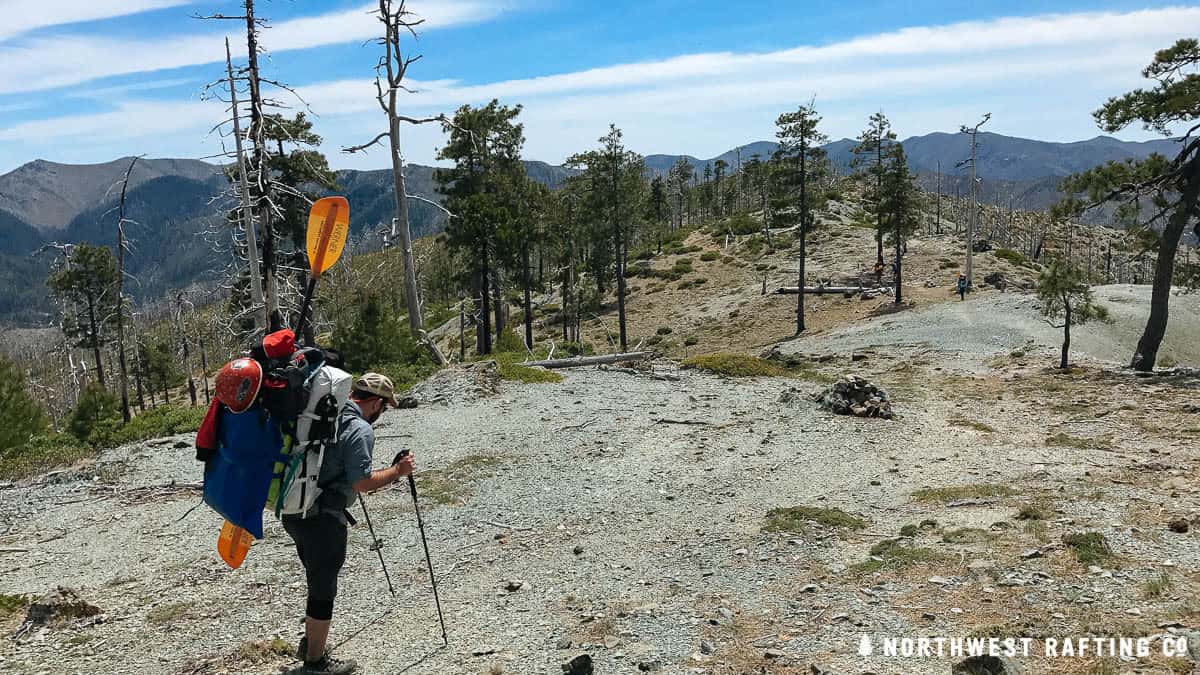
From the Moonscape we hiked down to the former site of the Bailey Cabin where we filled up our water bottles at a small spring. From here there is one more 200 foot climb to the base of Bailey Mountain where we began our final 2000 foot descent to the Chetco River. This final two mile descent took us through a botanical area where we saw wild iris, azalea, and the rare Kalmiopsis Leachiana, a rare plant endemic to the Kalmoipsis Wilderness.
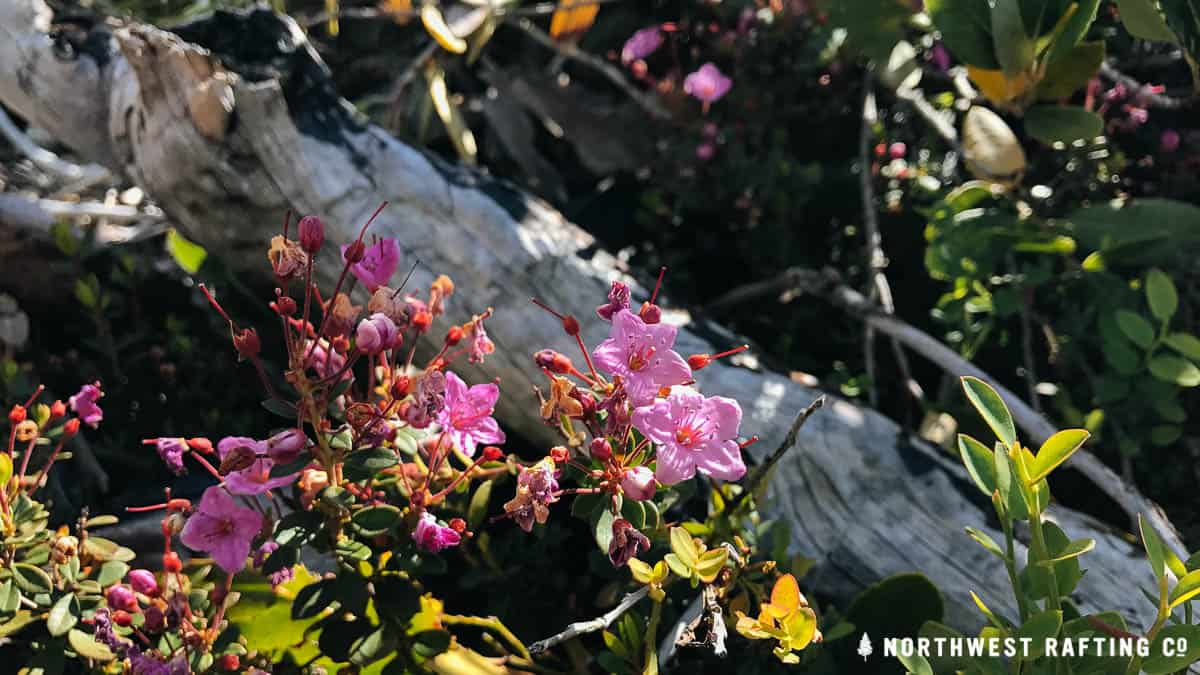
We reached our camp at the confluence of Carter Creek and the Chetco River exhausted. After a quick dinner we pumped up our inflatable kayaks and quickly fell asleep in them.
The Magic Canyon
The 3 miles from Carter Creek to Slide Creek on the Chetco River is known as the “Magic Canyon.” We put our boats in the Chetco River and paddled through Class III rapids and deep pools nestled in steep canyon walls.
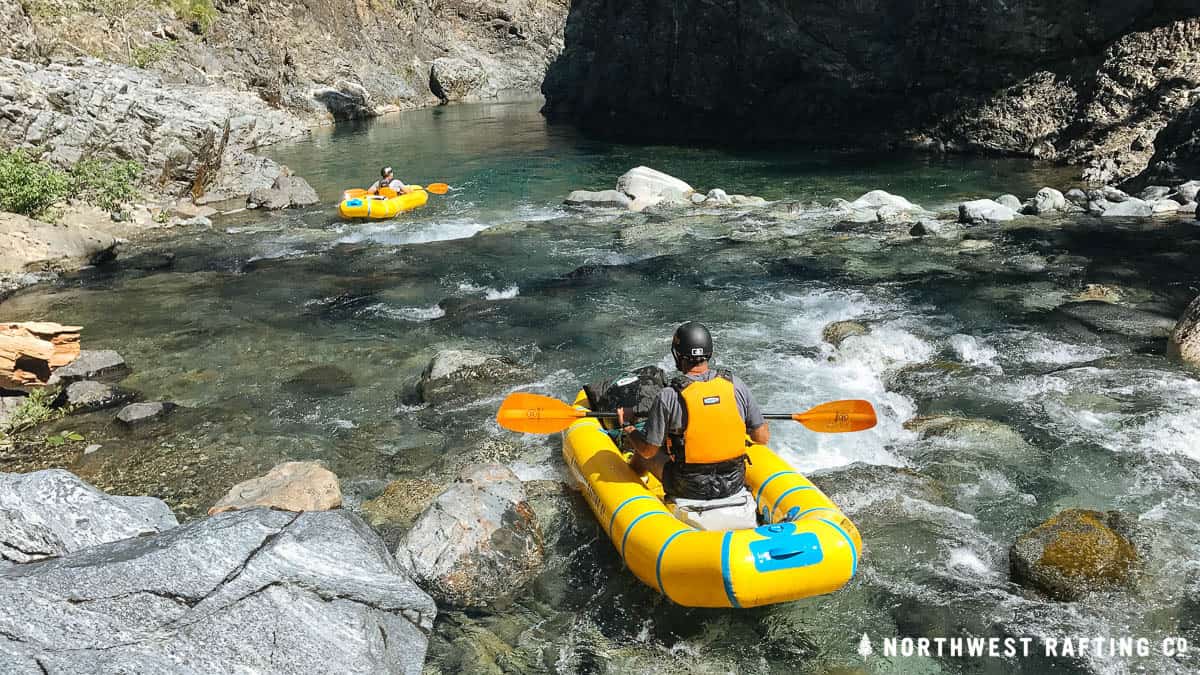
We stopped to scramble up some waterfalls found on a side creek we call Magic Canyon Creek.
The Upper Gorge
The Upper Gorge begins after Slide Creek and is the steepest section of the Chetco River. It’s full of many complicated Class IV Rapids and several portages that begins with a long rapid at the confluence with Slide Creek. Just downstream is another rapid we call “Initiation.” The next un-named rapid is one of the biggest on the Chetco and has a long entrance before a six foot drop.
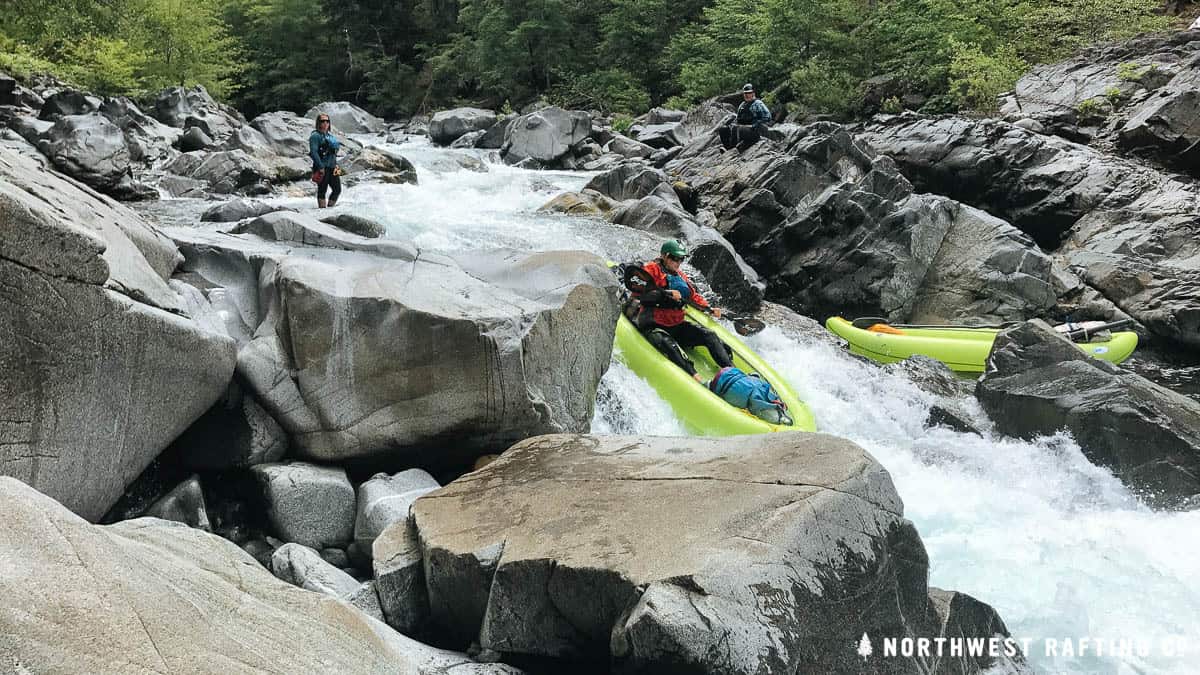
In the next few miles we ran non stop rapids and did 5 portages of all or part of the bigger rapids. It took us 4 hours to paddle the 3 miles of the Upper Chetco Gorge down Taggarts Bar.
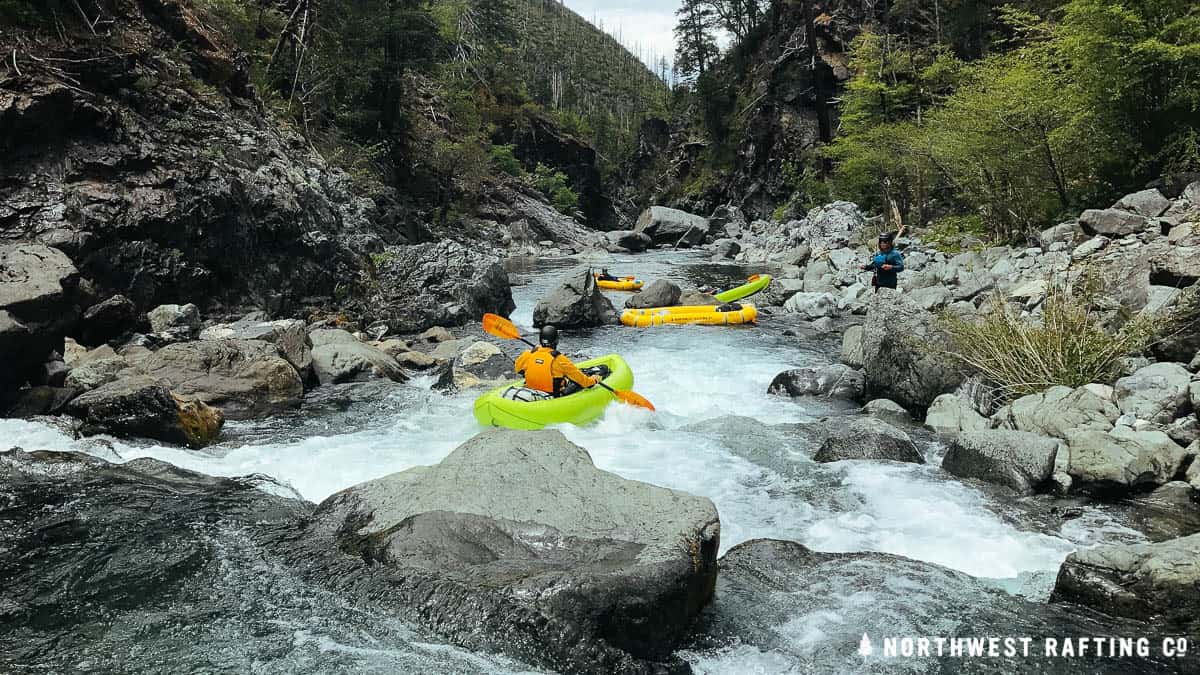
Below here we made good time and paddled the remaining 5 miles down to our camp at Chetco Bar in just 2 hours.
Chetco Bar Camp
We reached Chetco Bar in the early evening and we knew rain was coming so we immediately made a fire and set up our tents. After dinner it started raining and we all retreated to our tents for the evening.
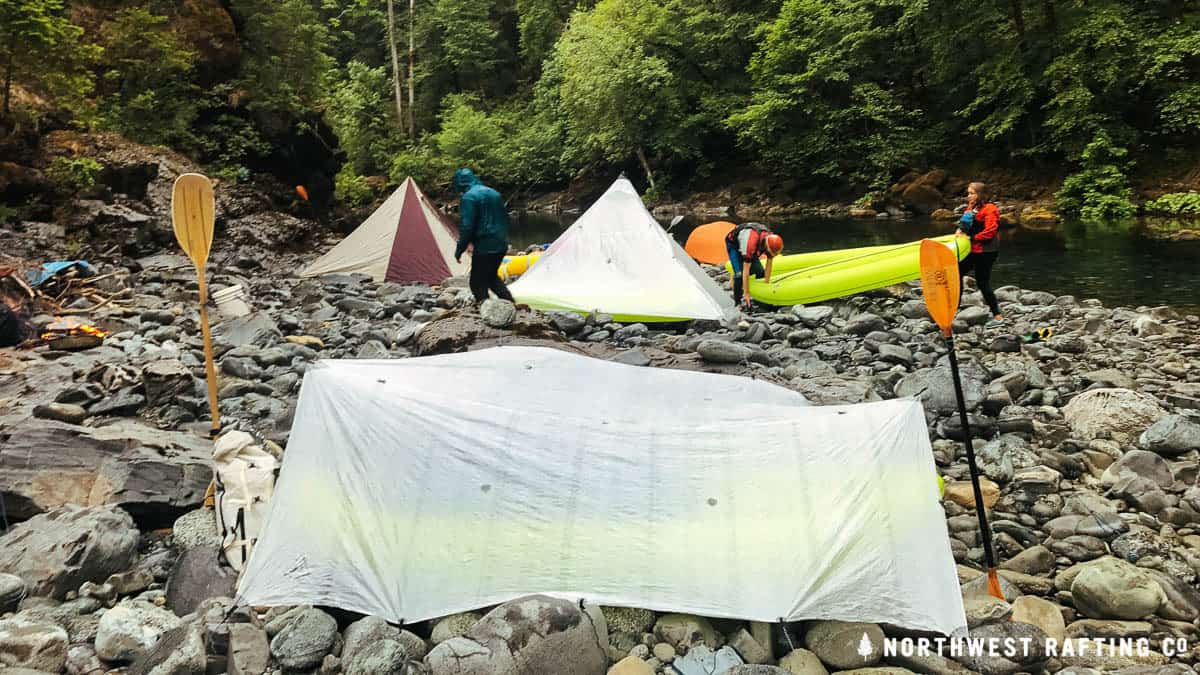
It drizzled all night and we woke up to rain the next morning. Everything was soaked but we were able to start a fire and warm up while making breakfast and packing our boats. We all dressed in our warmest river clothes and we headed downstream in a morning rain.
Chetco Bar to Boulder Creek
About a half mile downstream we pulled over to scout a rapid at Higgins Bar. This is the location of a mining claim from the 1980s that no longer exists but we did find an inscription in the rocks left by gold miners.
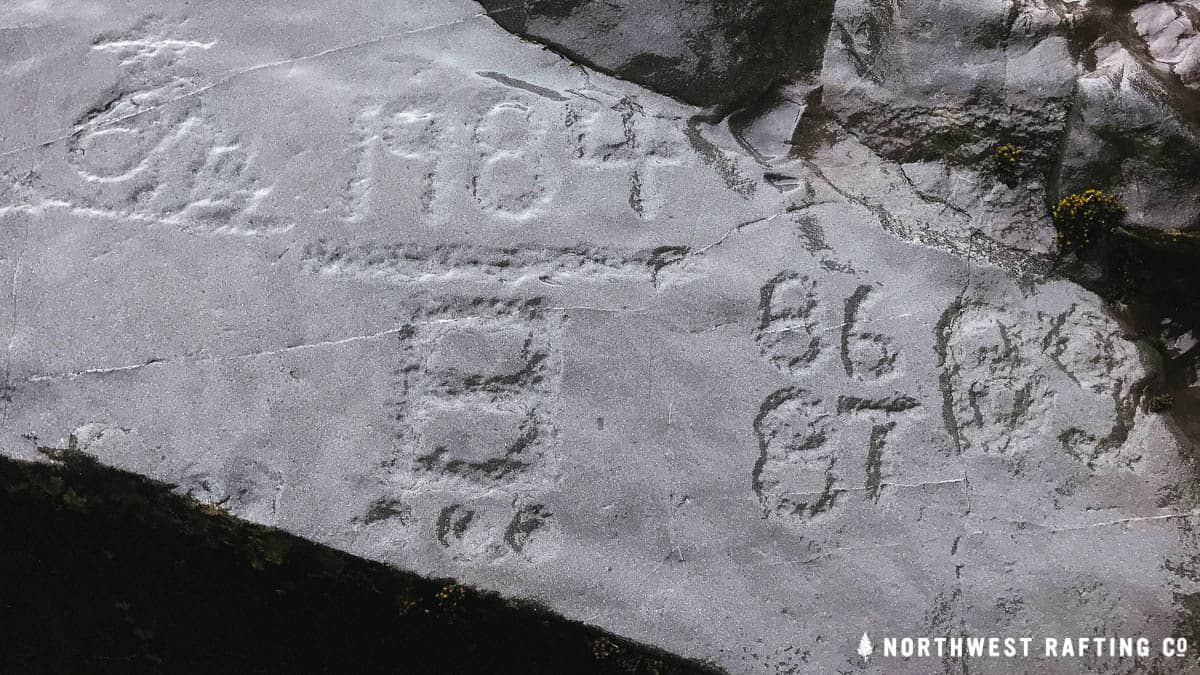
We portaged the entrance of the rapid at Higgins Bar and continued downstream. There were some great drops in this section that led up to the Tin Cup Rapids just above Tin Cup Creek. We scouted these rapids and took our time safely running this nearly non-stop section of whitewater.
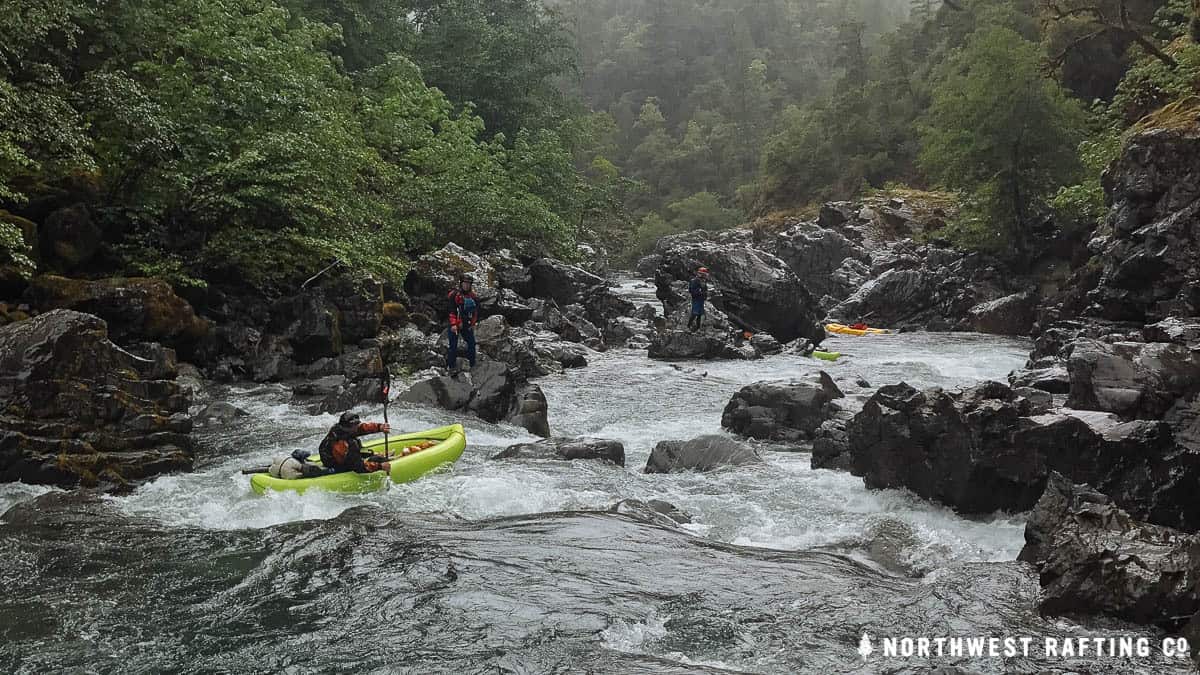
After Tin Cup Creek it was still raining so we skipped lunch and quickly made our way down the canyon to our camp at Boulder Creek.
Boulder Creek
We camped on a large gravel bar adjacent to where Boulder Creek. Luckily we had a reprieve from the rain so we stayed up late playing cards and enjoying the sounds of nearby Boulder Creek.
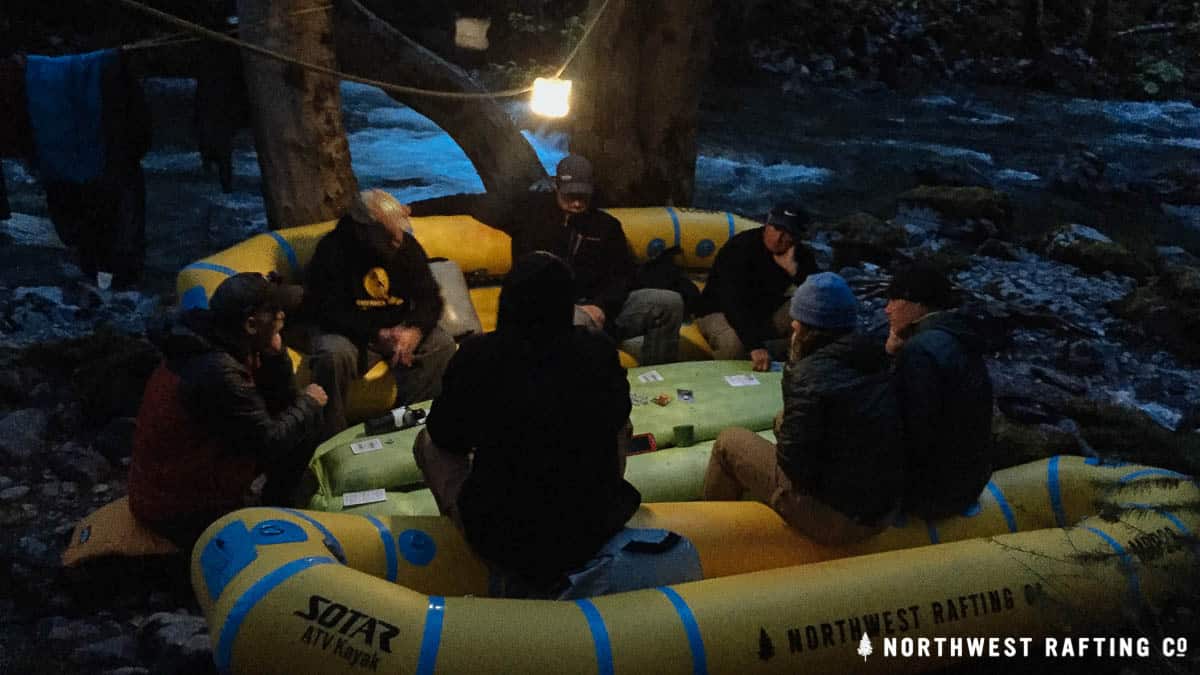
The night was free of rain but the next morning the rain came back so we put on our warmest clothes and headed downstream.
Boulder Creek to Tolman Ranch
On our last day we paddled the final three miles from the Kalmiopsis Wilderness boundary at Boulder Creek down to Tolman Ranch where a steep dirt road reaches the river. There are more fun rapids in this section that made a wonderful finale to the trip.
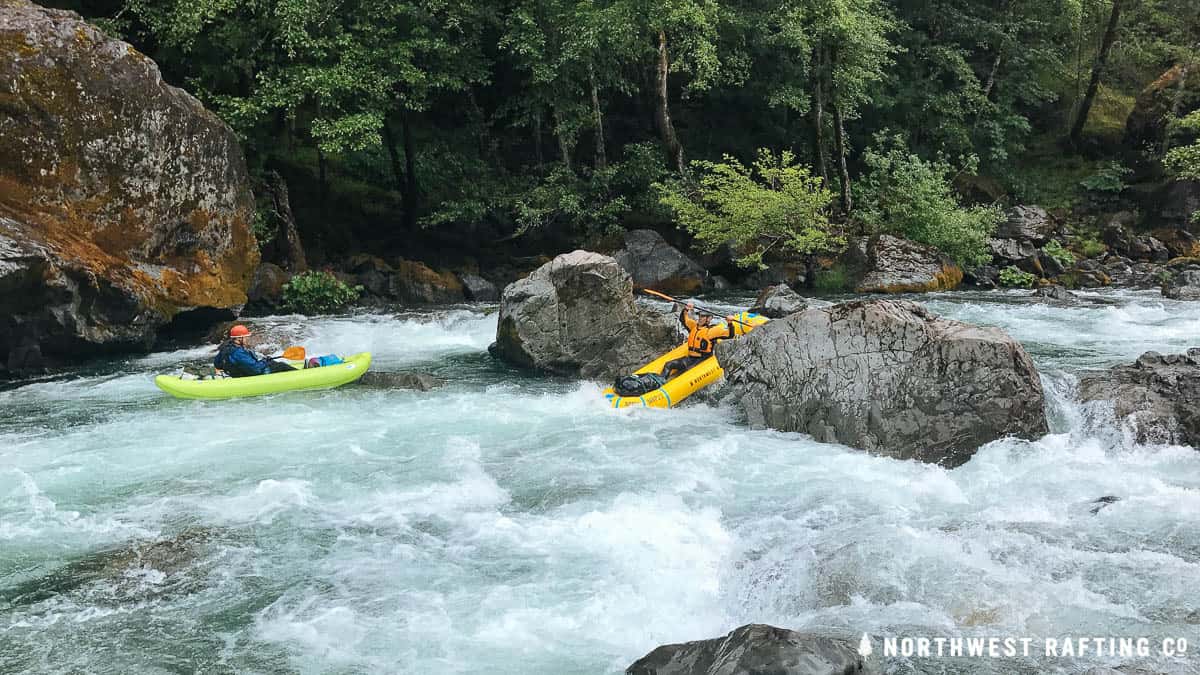
Once we reached Tolman Ranch we packed our stuff in our van and drove back to Grants Pass via Brookings.
Innovation and Equipment Testing
This is a cutting edge expedition and we strive to improve our gear every time we do it. This time we put a few new pieces of gear to the test.
AIRE BakRaft Expedition: This 10′ inflatable kayak weighs in at just 10.5 pounds making our hike in much easier than our previous trips. The combination of the very slippery fabric (“slipperier” than urethane) and impossibly light weight make this boat really nice to paddle in shallow, rocky rivers.
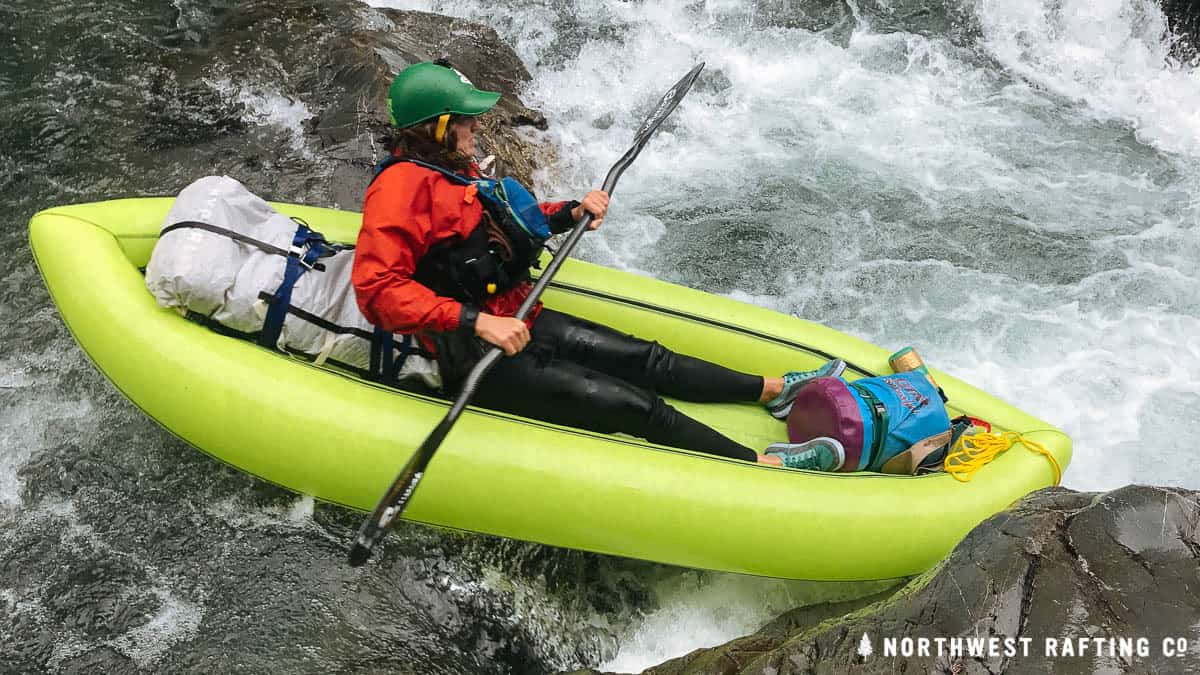
When loaded down with overnight gear, however, it’s a bit less stable in rapids than the SOTAR ATV kayaks that we normally use. These new, innovative boats are not as durable as traditional inflatable kayaks but they are pretty easy to repair in the field. We put a hole on and outer tube and put a few long scratches in some of the boats.
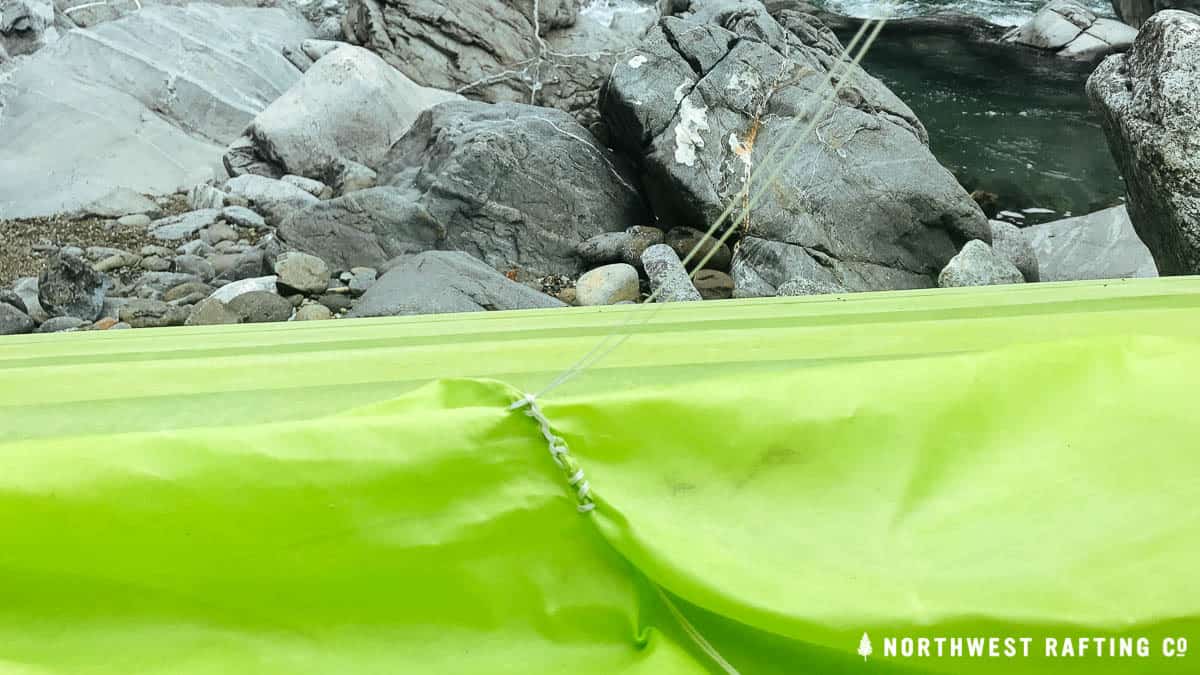
I’m hoping that AIRE can make a new slightly wider version of this boat with more volume in the bow and stern (for stability) as well as reinforced material along the bottom and sides.
Hyperlite Ultamid 4 Tent: This 4 person tent weighs in just 1.3 pounds and I was skeptical when it arrived because it’s impossibly light.
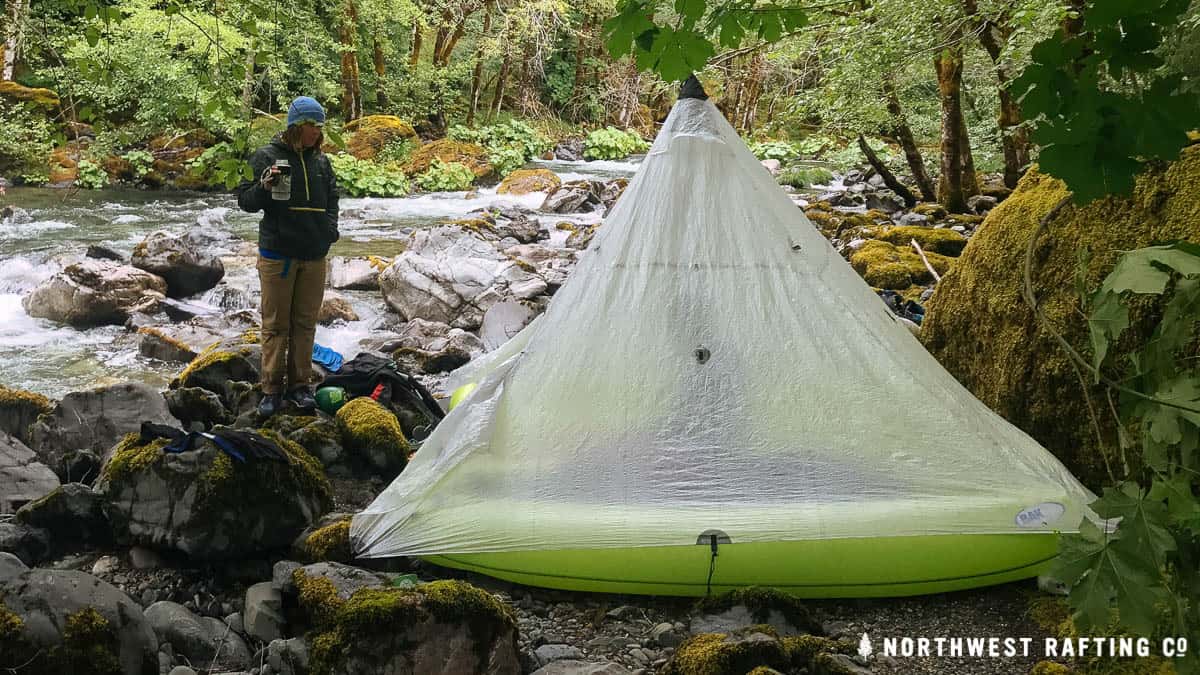
We were able to get three inflatable kayaks under this tent and everyone stayed dry though our night of rain at Chetco Bar. I am absolutely sold on this tent!
Hyperlite 4400 Porter Pack: I’ve tested this pack on a few other trips but last week we really put these to the test with heavy loads and hard use.
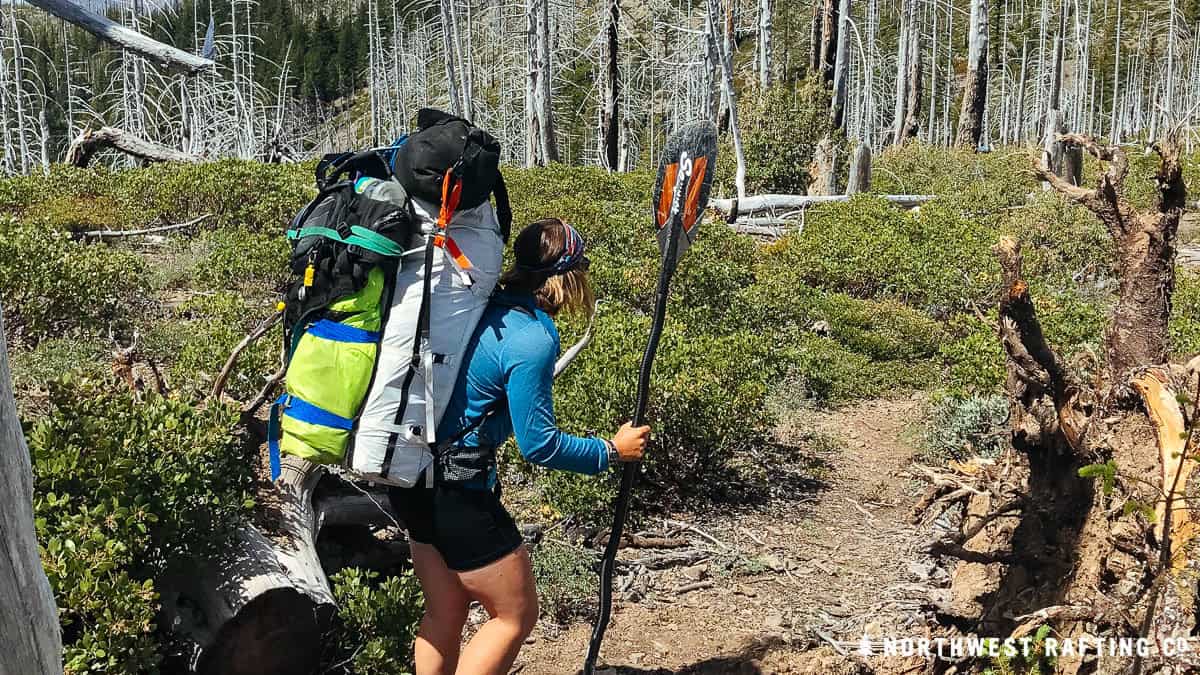
These packs fit nearly perfectly in the BakRaft Expedition Kayaks and we use them as our backrest when rigged into the boats. These packs are absolutely perfect.
The goal is simple: arrive at the ideal balance of strength, weight, and performance to create gear that’s bombproof and foolproof.Hyperlite Mountain Gear web site
After using Hyperlite products on several expeditions I am absolutely sold. Everything I’ve used is well thought out and bomber and I can’t recommend their equipment enough. The combination of their Porter Packs with their Roll-Top Stuff Sacks is a bomber combination for any river expedition.

